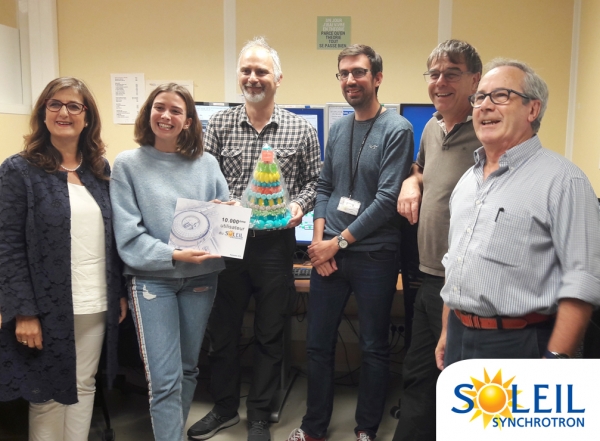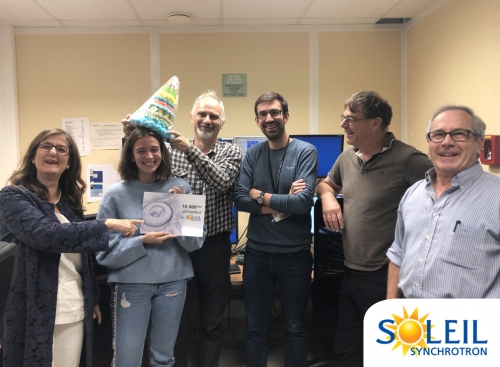Friday, September 7th, 2018: what a great day for Synchrotron SOLEIL!
After 10 years of light with our users (SOLEIL welcomes them since 2008), we were very happy and excited to welcome our 10 000th user, i.e. the 10 000th different person coming to perform an experiment, Camino Martin.
10 years of operation with our users, this is also (numbers at the end of 2017):
- more that 33 000 user visits, from 2175 laboratories in 56 countries
- 4375 publications, and 500 PhD thesis
- 5858 proposals accepted for 57 824 beam shifts (8 hours) allocated
And we are looking forward to celebrating in the future many happy events such as the visit of our 10 000th user.

Camino Martin is from the University of Cantabria, in Santander, Spain. She studies the effects of high pressure on the morphology of gold nanorods. For this, she uses the Small Angle X-ray Scattering (SAXS) technique which the specialty of the SWING beamline.
Nanoparticles show many new phenomena in physics and chemistry related to their small size (much smaller than visible wavelengths), high specific surface and shape. Singularly, metallic nanoparticles distinguish themselves from other nanostructures such as quantum dots, magnetic and polymeric nanoparticles by their unique localized surface plasmon resonance. This optical response, resulting from photon confinement to a small particle size, enhances some radiative and non-radiative phenomena of the nanoparticles and thus opens the path to multiple applications such as surface enhanced Raman spectroscopy, thermal therapy, or imaging among others.
The determination of the mechanical properties of nanoparticles has constituted a major challenge because of the difficulty of applying well-defined loading forces to the materials and because of the problems of measuring deformations accurately. New experimental methods are needed to explore these properties; particularly attractive are spectroscopic measurements under high-pressure.
The aim of this experiment is to investigate the macrostructure, shape and size, of gold nanorods immersed in methanol-ethanol under high-pressure conditions using SAXS. Particularly, the team from Cantabria University analyzes the effects of solidification of pressure transmitting media on the nanorod shape and size, aggregation and/or reorientation and strain.
The capability of the SWING beamline to adapt high-pressure diamond anvil cells (DAC) makes it possible the study of nanorods solutions with SAXS. At variance with transmission electron microscopy (TEM), this experiment providesin situmacrostructural information of plasmonic nanoparticles under high-pressure conditions.

